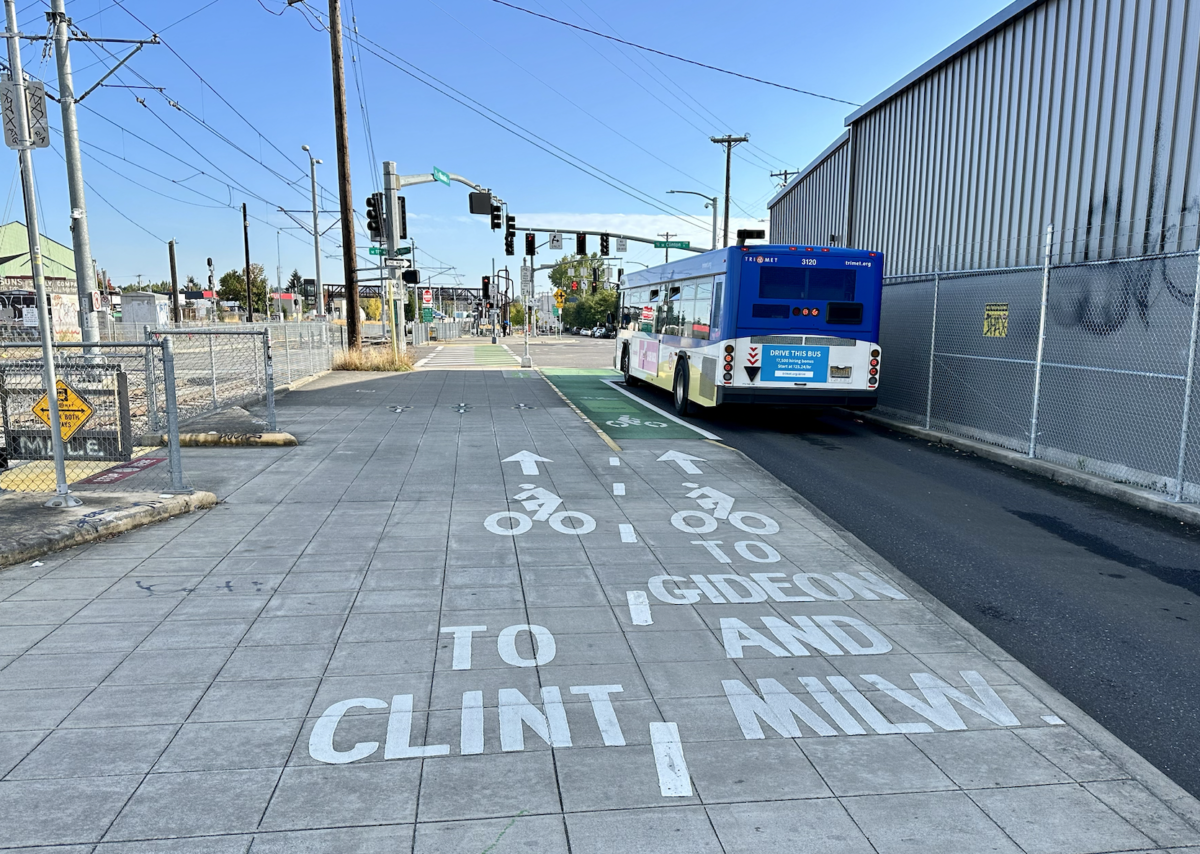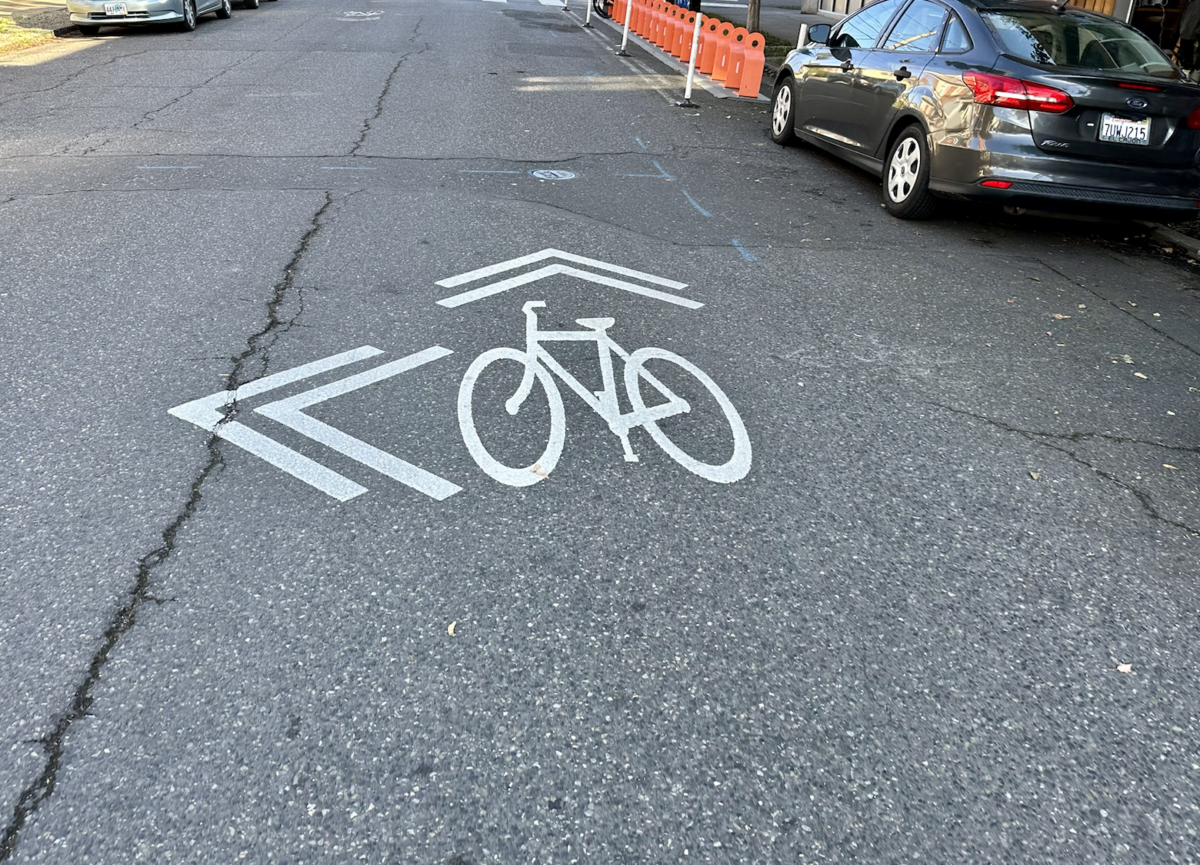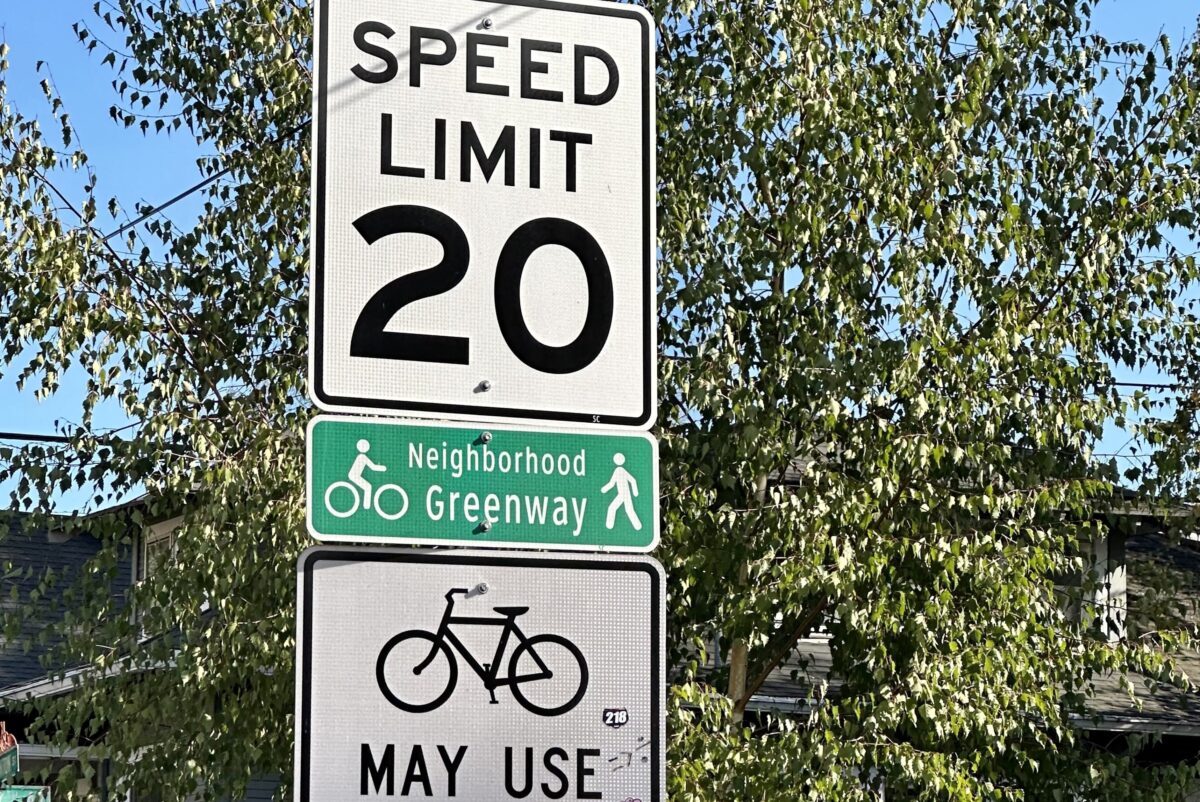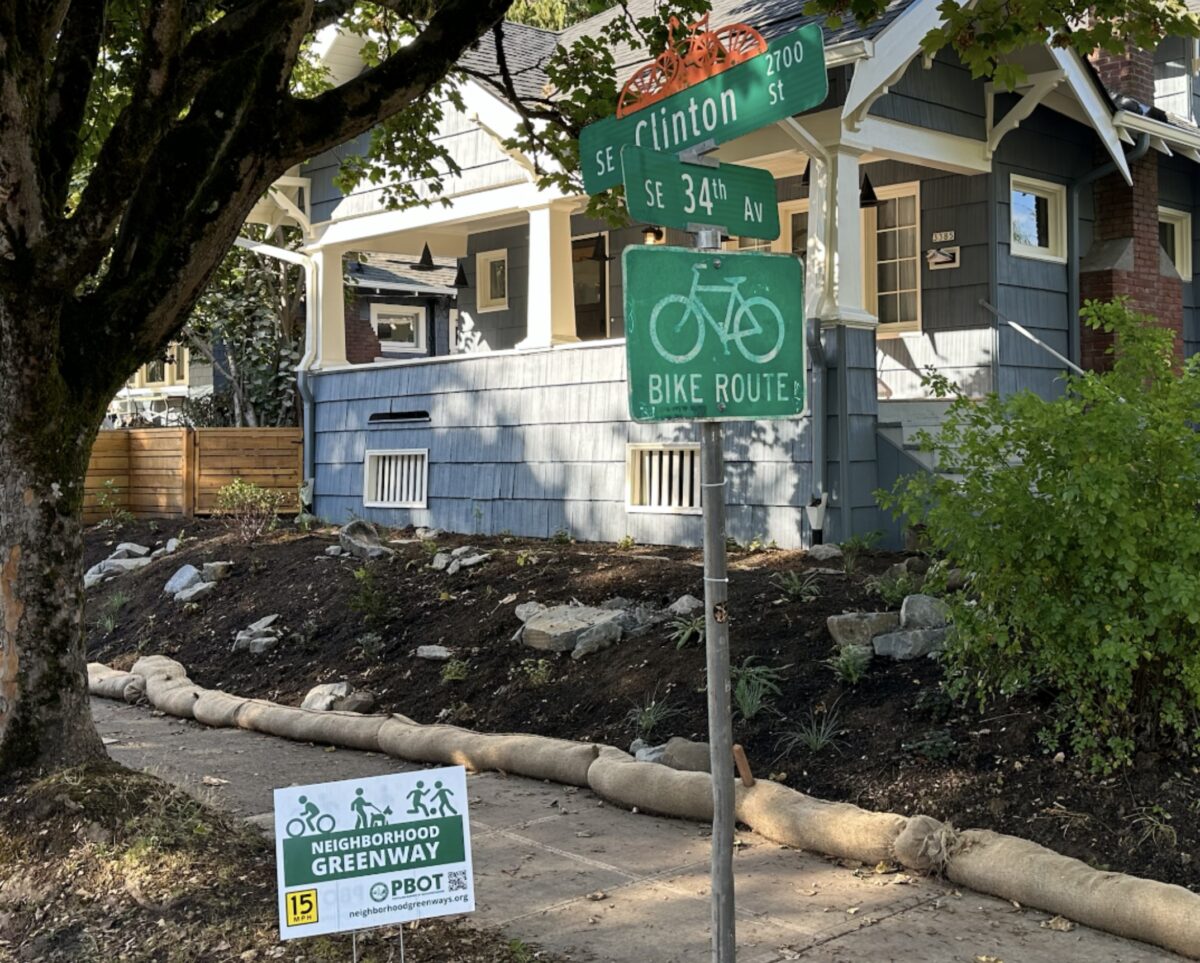
“One of the beautiful things that could happen if the wayfinding was right would be that you could just go out and explore.”
-Aaron Kuehn
There are two kinds of people in the world: map people and non-map people. I am a proud map person (as I imagine many BikePortland readers can relate to) – I have always been fascinated by visual representations of geography, and I love giving directions and planning out routes. But regardless of your personal interest in maps, everyone needs some kind of navigation tactic to move around the city.
For people who bike or use other modes of active transportation to get around, a sound navigation strategy is especially important. But the way Portland is designed, creating that strategy requires a level of exertion that not everybody has the time or energy for – so they end up driving instead. This is something advocates want to change.
Some members of the non-profit advocacy group Bike Loud PDX have taken on an effort to improve Portland’s bike wayfinding system. Bike Loud member Aaron Kuehn is the de facto leader of project. He wrote an extensive report detailing Portland’s current bike wayfinding system and offered suggestions for improvement. The report is still in progress, but I took a look at what Kuehn has written so far and was intrigued by what I saw.
When I talked to Kuehn about his interest in bike wayfinding, he said a lot of it stems from his work doing graphic design. Kuehn is a graphic designer by trade, so he spends a lot of time thinking about the best way to create visual depictions.
“This is at the intersection of things I’m really interested in – visual communication and bike advocacy,” Kuehn told me.
Kuehn wants to use his skills as a designer to help change people’s transportation habits. He thinks it’s a pragmatic approach to making the best of the bike network we have instead of waiting for the right infrastructure to be built on every street in the city.
“A world class bicycle wayfinding system can be designed and installed in a short period of time, and requires far less funding than concrete infrastructure,” the report states. “You probably have developed your own routes for getting around town efficiently, but in order for a public way or route to usefully exist, it must be commonly identifiable.”
“What I’m trying to do is use the network that we already have and make it more accessible rather than changing the configuration of the streets, right? Step one with wayfinding is just taking what we have and squeezing it for all we can get out of it,” Kuehn told me.
What is wayfinding?
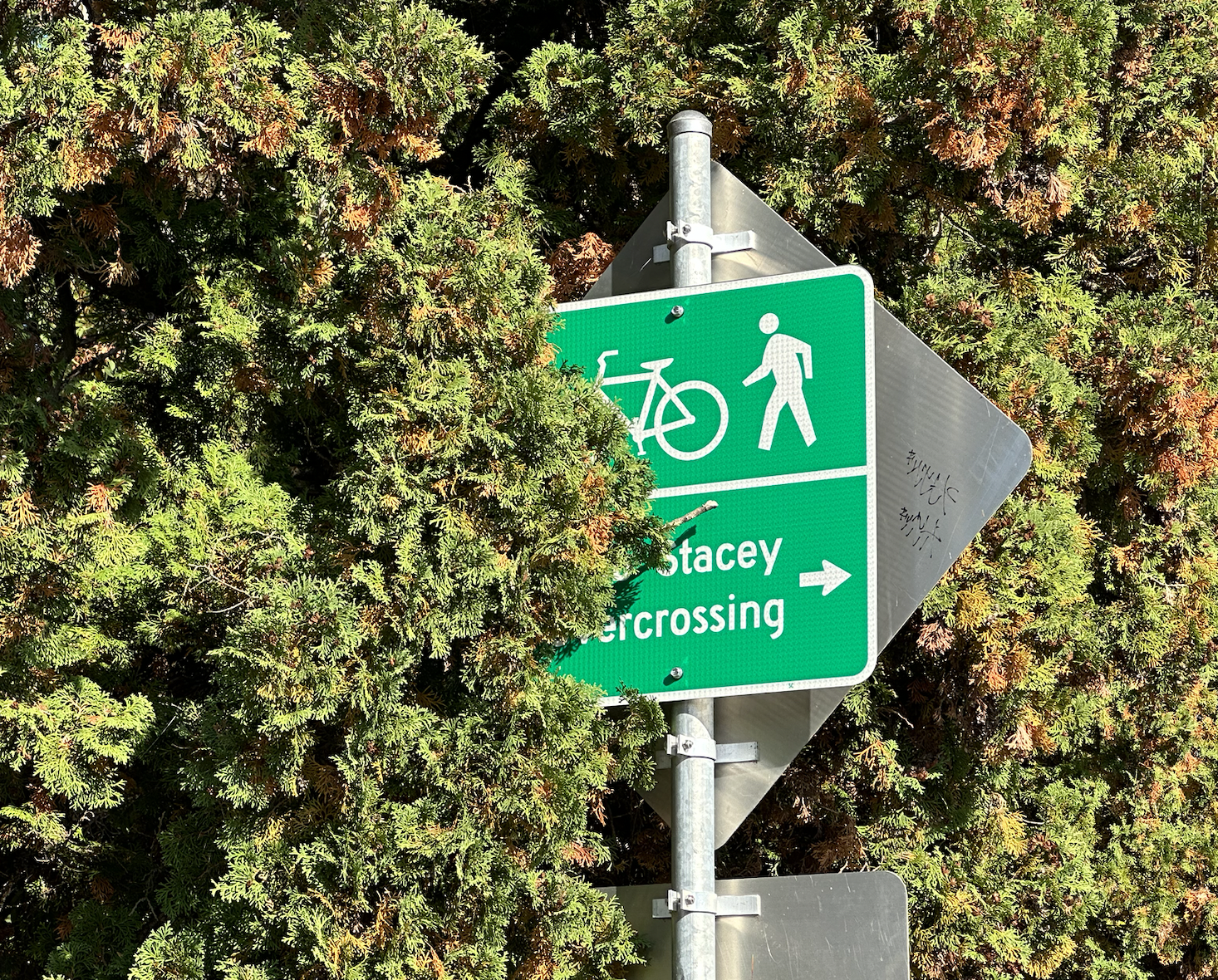

In the report, Kuehn describes wayfinding as “the primary education and communication medium for reaching street users.” The report continues:
Thoughtful wayfinding can reduce psychological barriers to modeshift, by inclusively inviting new beginner users. Wayfinding establishes a trust relationship, where the care that went into creating the wayfinding system communicates a concern for the safety and wellbeing of the user and is commensurate with the quality and care embodied in the infrastructure and route planning. The user chooses to follow the wayfinding because it is reliable.
The Bike Loud report explains the three main forms of bike wayfinding we use in Portland right now. These are:
- Sharrow pavement markings: Painted bike symbols used to indicate when people are on a neighborhood greenway with arrows marking which direction they should turn to stay on the greenway. This system was developed in Portland and is not nationally recognized as a wayfinding strategy, but it works well to guide people through the greenways. The report says this is “the closest thing Portland has to a comprehensive marked bicycling network, but because they only apply to greenways they are limited as a universal wayfinding tool to connect to other types of cycling infrastructure.”
- “D series” guide signs: Named “D series” because they provide destination, directions, and duration to nearby popular locations. The report states these are overly complicated and try to convey too much information at once, and would also not be helpful to someone who isn’t familiar with Portland neighborhood names.
- Neighborhood greenway “confidence” signs: These indicate to people biking and driving that they’re on greenways, and they’re currently few and far between. The report states that “it is likely that many potential users do not use greenways because they do not know they exist or where they are located. A confidence sign in the middle of every block, and new signage posted at greenway junctions, junctions with all bikeways, and junctions with arterials will increase awareness of greenways.”
These don’t take into account temporary or non-fixed signs. The Portland Bureau of Transportation has handed out greenway yard signs to people who live on the routes as a community wayfinding effort. But these are flimsy and can be removed at the discretion of the people who put them up.
Something else that may help with wayfinding: green paint. The newer green pavement treatments popping up around the city (on the Naito and Greeley bikeways and all around the South Waterfront) weren’t necessarily done with wayfinding in mind, but it could be used for that purpose. Kuehn says this “could possibly be the gold standard for confidence marking” and is “an easy to follow system without any abstract thinking.”
The report has some suggestions for expanding on the wayfinding elements we already have to make the system more robust. These include route signs, which would name and identify the well-established routes people use to bike around the city akin to the route signs used on highways, and a bicycle node network focusing on directing people toward connecting bike routes instead of long continuous bikeways.
As we touched on in a recent story about greenways near Hawthorne Blvd, advocates also want to make sure people know about bikeways when they’re on main streets (like Hawthorne) that don’t have dedicated bike facilities. This will require signage and education on all streets, not just the greenways, but it’s a very important aspect of helping people navigate the city by bike.
Breaking habits to achieve critical mass
Kuehn thinks people default to using cars to get around because it’s what they’re used to. In order to encourage more people to bike, we need to throw a wrench in that process.
“The system is designed for you to drive a car. All the advertising is telling you to do it, everyone else is doing it,” Kuehn told me. “And people will do everything possible to not change their routines.”
If you make a wrong turn while driving a car, it’s not usually a big deal: wandering around in a car won’t physically tire you out, and you’re unlikely to come upon a street that’s inhospitable to your mode of transportation. While biking, however, you need to preserve your energy, not waste it by going around in circles. And if you end up in an area filled with dangerous arterials and no bike infrastructure to speak of, you could end up seriously hurt. Most people don’t want to find themselves in this situation.
Bike Loud’s key mission is to get Portland to a 25% bike mode share by 2030. This is going to require a tremendous shift and will mean bringing people into the fold who currently don’t feel safe enough to bike often.
“[Achieving the 25% mode share will require] bringing in people who are concerned for their safety, who aren’t in the bike community already and don’t have friends who are,” Kuehn said. “What is it that’s going to nudge people to feel empowered and know they can do it?”
A key tenet of the movement to get people out of their cars and onto bike seats is that the popularity of biking creates a feedback loop. More people biking means less cars on the road and thus, less potential for danger, which bike-wary people will notice and may be inspired to start doing it themselves.
“If we can shift the mode, it’s going to make it safer for everybody,” Kuehn said.
The path forward
Some might take an issue with Kuehn’s philosophy for not demanding enough from the city. To people who think having protected bike lanes on Portland’s main streets is crucial for achieving our mode shift goals, this might seem like a way to let the city stick to the status quo of relegating bike riders to the back streets.
But I don’t think it has to be either/or. We shouldn’t have to choose between asking our leaders to prioritize active transportation in our cities and using the infrastructure we already have to the greatest extent possible. The more people we can get on bikes right now, the better – and eventually, that could very well mean taking up more real estate on commercial streets that are currently very dangerous to bike on.
Kuehn isn’t totally sure how he and the rest of Bike Loud will move forward with their wayfinding report – they’re still hashing out their plans for how to implement these ideas. Regardless of what happens with this report, however, I think this is a really interesting topic for people to think about while they bike around the city.
A big part of the reason I love biking so much is because it helps me carve out an internal map of my surroundings and center myself in space. I’ve only lived in Portland for a little over a year, but since I spend so much time thinking about and using the streets all across the city, I feel like I’ve been here longer. Everyone should have the opportunity to feel this connected with the place where they live.
“It should be possible to be spontaneous,” Kuehn said. “One of the beautiful things that could happen if the wayfinding was right would be that you could just go out and explore.”
